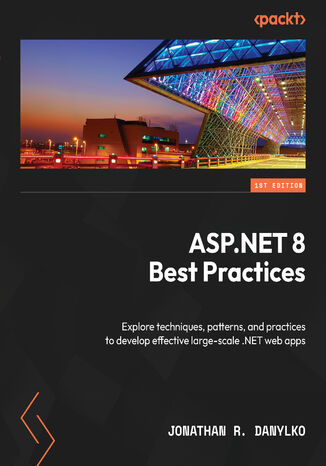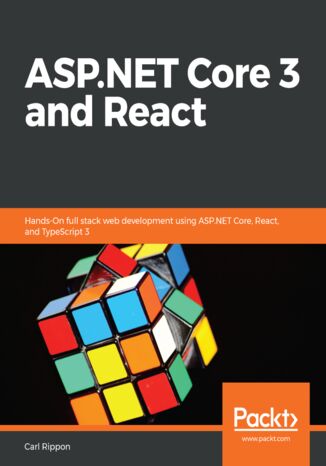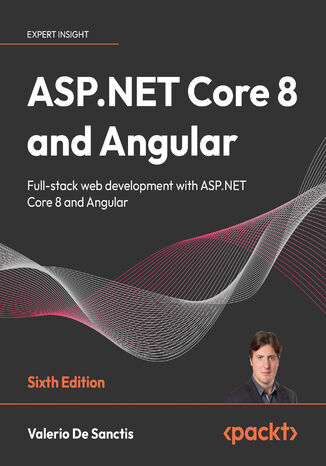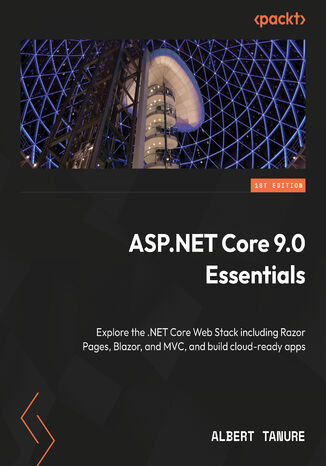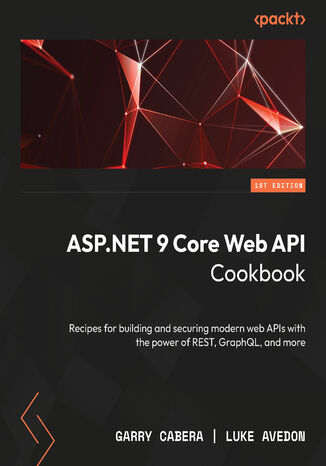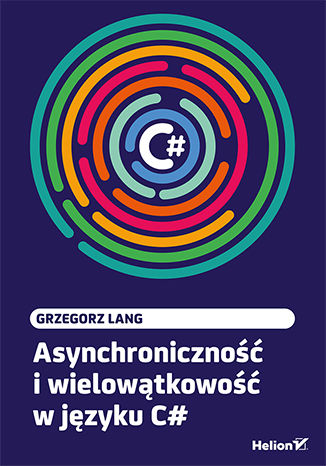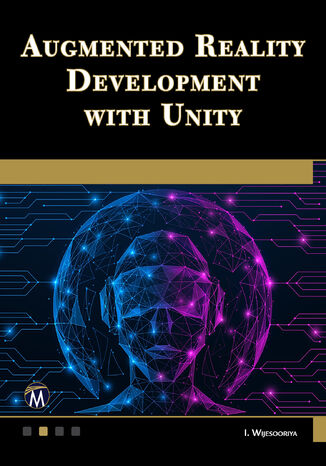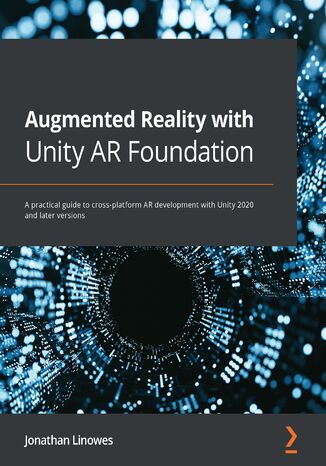Categories
Ebooks
-
Business and economy
- Bitcoin
- Businesswoman
- Coaching
- Controlling
- E-business
- Economy
- Finances
- Stocks and investments
- Personal competence
- Computer in the office
- Communication and negotiation
- Small company
- Marketing
- Motivation
- Multimedia trainings
- Real estate
- Persuasion and NLP
- Taxes
- Social policy
- Guides
- Presentations
- Leadership
- Public Relation
- Reports, analyses
- Secret
- Social Media
- Sales
- Start-up
- Your career
- Management
- Project management
- Human Resources
-
For children
-
For youth
-
Education
-
Encyclopedias, dictionaries
-
E-press
- Architektura i wnętrza
- Health and Safety
- Biznes i Ekonomia
- Home and garden
- E-business
- Ekonomia i finanse
- Esoterecism
- Finances
- Personal finance
- Business
- Photography
- Computer science
- HR & Payroll
- For women
- Computers, Excel
- Accounts
- Culture and literature
- Scientific and academic
- Environmental protection
- Opinion-forming
- Education
- Taxes
- Travelling
- Psychology
- Religion
- Agriculture
- Book and press market
- Transport and Spedition
- Healthand beauty
-
History
-
Computer science
- Office applications
- Data bases
- Bioinformatics
- IT business
- CAD/CAM
- Digital Lifestyle
- DTP
- Electronics
- Digital photography
- Computer graphics
- Games
- Hacking
- Hardware
- IT w ekonomii
- Scientific software package
- School textbooks
- Computer basics
- Programming
- Mobile programming
- Internet servers
- Computer networks
- Start-up
- Operational systems
- Artificial intelligence
- Technology for children
- Webmastering
-
Other
-
Foreign languages
-
Culture and art
-
School reading books
-
Literature
- Antology
- Ballade
- Biographies and autobiographies
- For adults
- Dramas
- Diaries, memoirs, letters
- Epic, epopee
- Essay
- Fantasy and science fiction
- Feuilletons
- Work of fiction
- Humour and satire
- Other
- Classical
- Crime fiction
- Non-fiction
- Fiction
- Mity i legendy
- Nobelists
- Novellas
- Moral
- Okultyzm i magia
- Short stories
- Memoirs
- Travelling
- Narrative poetry
- Poetry
- Politics
- Popular science
- Novel
- Historical novel
- Prose
- Adventure
- Journalism, publicism
- Reportage novels
- Romans i literatura obyczajowa
- Sensational
- Thriller, Horror
- Interviews and memoirs
-
Natural sciences
-
Social sciences
-
School textbooks
-
Popular science and academic
- Archeology
- Bibliotekoznawstwo
- Cinema studies
- Philology
- Polish philology
- Philosophy
- Finanse i bankowość
- Geography
- Economy
- Trade. World economy
- History and archeology
- History of art and architecture
- Cultural studies
- Linguistics
- Literary studies
- Logistics
- Maths
- Medicine
- Humanities
- Pedagogy
- Educational aids
- Popular science
- Other
- Psychology
- Sociology
- Theatre studies
- Theology
- Economic theories and teachings
- Transport i spedycja
- Physical education
- Zarządzanie i marketing
-
Guides
-
Game guides
-
Professional and specialist guides
-
Law
- Health and Safety
- History
- Road Code. Driving license
- Law studies
- Healthcare
- General. Compendium of knowledge
- Academic textbooks
- Other
- Construction and local law
- Civil law
- Financial law
- Economic law
- Economic and trade law
- Criminal law
- Criminal law. Criminal offenses. Criminology
- International law
- International law
- Health care law
- Educational law
- Tax law
- Labor and social security law
- Public, constitutional and administrative law
- Family and Guardianship Code
- agricultural law
- Social law, labour law
- European Union law
- Industry
- Agricultural and environmental
- Dictionaries and encyclopedia
- Public procurement
- Management
-
Tourist guides and travel
- Africa
- Albums
- Southern America
- North and Central America
- Australia, New Zealand, Oceania
- Austria
- Asia
- Balkans
- Middle East
- Bulgary
- China
- Croatia
- The Czech Republic
- Denmark
- Egipt
- Estonia
- Europe
- France
- Mountains
- Greece
- Spain
- Holand
- Iceland
- Lithuania
- Latvia
- Mapy, Plany miast, Atlasy
- Mini travel guides
- Germany
- Norway
- Active travelling
- Poland
- Portugal
- Other
- Przewodniki po hotelach i restauracjach
- Russia
- Romania
- Slovakia
- Slovenia
- Switzerland
- Sweden
- World
- Turkey
- Ukraine
- Hungary
- Great Britain
- Italy
-
Psychology
- Philosophy of life
- Kompetencje psychospołeczne
- Interpersonal communication
- Mindfulness
- General
- Persuasion and NLP
- Academic psychology
- Psychology of soul and mind
- Work psychology
- Relacje i związki
- Parenting and children psychology
- Problem solving
- Intellectual growth
- Secret
- Sexapeal
- Seduction
- Appearance and image
- Philosophy of life
-
Religion
-
Sport, fitness, diets
-
Technology and mechanics
Audiobooks
-
Business and economy
- Bitcoin
- Businesswoman
- Coaching
- Controlling
- E-business
- Economy
- Finances
- Stocks and investments
- Personal competence
- Communication and negotiation
- Small company
- Marketing
- Motivation
- Real estate
- Persuasion and NLP
- Taxes
- Social policy
- Guides
- Presentations
- Leadership
- Public Relation
- Secret
- Social Media
- Sales
- Start-up
- Your career
- Management
- Project management
- Human Resources
-
For children
-
For youth
-
Education
-
Encyclopedias, dictionaries
-
E-press
-
History
-
Computer science
-
Other
-
Foreign languages
-
Culture and art
-
School reading books
-
Literature
- Antology
- Ballade
- Biographies and autobiographies
- For adults
- Dramas
- Diaries, memoirs, letters
- Epic, epopee
- Essay
- Fantasy and science fiction
- Feuilletons
- Work of fiction
- Humour and satire
- Other
- Classical
- Crime fiction
- Non-fiction
- Fiction
- Mity i legendy
- Nobelists
- Novellas
- Moral
- Okultyzm i magia
- Short stories
- Memoirs
- Travelling
- Poetry
- Politics
- Popular science
- Novel
- Historical novel
- Prose
- Adventure
- Journalism, publicism
- Reportage novels
- Romans i literatura obyczajowa
- Sensational
- Thriller, Horror
- Interviews and memoirs
-
Natural sciences
-
Social sciences
-
Popular science and academic
-
Guides
-
Professional and specialist guides
-
Law
-
Tourist guides and travel
-
Psychology
- Philosophy of life
- Interpersonal communication
- Mindfulness
- General
- Persuasion and NLP
- Academic psychology
- Psychology of soul and mind
- Work psychology
- Relacje i związki
- Parenting and children psychology
- Problem solving
- Intellectual growth
- Secret
- Sexapeal
- Seduction
- Appearance and image
- Philosophy of life
-
Religion
-
Sport, fitness, diets
-
Technology and mechanics
Videocourses
-
Data bases
-
Big Data
-
Biznes, ekonomia i marketing
-
Cybersecurity
-
Data Science
-
DevOps
-
For children
-
Electronics
-
Graphics/Video/CAX
-
Games
-
Microsoft Office
-
Development tools
-
Programming
-
Personal growth
-
Computer networks
-
Operational systems
-
Software testing
-
Mobile devices
-
UX/UI
-
Web development
-
Management
Podcasts
C#
As .NET 8 emerges as a long-term support (LTS) release designed to assist developers in migrating legacy applications to ASP.NET, this best practices book becomes your go-to guide for exploring the intricacies of ASP.NET and advancing your skills as a software engineer, full-stack developer, or web architect.This book will lead you through project structure and layout, setting up robust source control, and employing pipelines for automated project building. You’ll focus on ASP.NET components and gain insights into their commonalities. As you advance, you’ll cover middleware best practices, learning how to handle frontend tasks involving JavaScript, CSS, and image files. You’ll examine the best approach for working with Blazor applications and familiarize yourself with controllers and Razor Pages. Additionally, you’ll discover how to leverage Entity Framework Core and exception handling in your application. In the later chapters, you’ll master components that enhance project organization, extensibility, security, and performance.By the end of this book, you’ll have acquired a comprehensive understanding of industry-proven concepts and best practices to build real-world ASP.NET 8.0 websites confidently.
Microsoft's ASP.NET Core is a robust and high-performing cross-platform web API framework, and Facebook's React uses declarative JavaScript to drive a rich, interactive user experience on the client-side web. Together, they can be used to build full stack apps with enhanced security and scalability at each layer.This book will start by taking you through React and TypeScript components to build an intuitive single-page application. You’ll understand how to design scalable REST APIs that can integrate with a React-based frontend. You’ll get to grips with the latest features, popular patterns, and tools available in the React ecosystem, including function-based components, React Router, and Redux. The book shows how you can use TypeScript along with React to make the frontend robust and maintainable. You’ll then cover important .NET Core features such as API controllers, attribute routing, and model binding to help you build a sturdy backend. Additionally, you’ll explore API security with ASP.NET Core identity and authorization policies, and write reliable unit tests using both .NET Core and React before you deploy your app to the Azure cloud.By the end of the book, you’ll have gained all the knowledge you need to enhance your C# and JavaScript skills and build full stack, production-ready applications with ASP.NET Core and React.
If you want to learn how to use ASP.NET Core with Angular effectively, this hands-on guide is for you.Improve the way you create, debug, and deploy web applications while keeping up to date with the latest developments in .NET 8 and modern Angular, including .NET Minimal APIs and the new Angular standalone API defaults.You’ll begin by setting up SQL Server 2022 and building a data model with Entity Framework Core. You’ll progress to fetching and displaying data, handling user input with Angular reactive forms, and implementing front-end and back-end validators for maximum effect. After that, you will perform advanced debugging and explore unit testing features with xUnit for .NET, and Jasmine and Karma for Angular. You’ll use Identity API endpoints in ASP.NET Core and functional route guards in Angular to add authentication and authorization to your apps. Finally, you’ll learn how to deploy to Windows, Linux, and Azure.By the end of this book, you will understand how to tie together the front-end and back-end to build and deploy secure and robust web applications.
Build cutting-edge web applications using ASP.NET Core 9 with this comprehensive guide from Microsoft MVP Albert Tanure, a seasoned .NET expert with over 20 years of experience as a cloud solutions architect. Albert brings unparalleled expertise in building modern web applications to ASP.NET Core 9 Essentials to help you kickstart your journey on the right foot.Starting with the platform’s fundamental concepts, you’ll work through practical exercises to develop web applications with powerful UI frameworks, deliver flexible and scalable solutions through an API approach, and explore advanced topics such as customizing request flows and implementing robust security measures. You’ll get to grips with cloud-native practices to prepare your applications for cloud environments. Whether you’re a beginner or an experienced developer, this book is your guide to building modern, secure, and adaptable web applications with ASP.NET Core.By the end, you'll have the skills to create professional web applications that are scalable, resilient, and secure.
Discover what makes ASP.NET Core 9 a powerful and versatile framework for building modern web APIs that are both scalable and secure. This comprehensive, recipe-based guide leverages the authors’ decade-long experience in software development to equip developers with the knowledge to create robust web API solutions using the framework's most powerful features.Designed for intermediate to advanced .NET developers, this cookbook contains hands-on recipes that demonstrate how to efficiently build, optimize, and secure APIs using this cutting-edge technology. You'll master essential topics, such as creating RESTful APIs, implementing advanced data access strategies, securing your APIs, creating custom middleware, and enhancing your logging capabilities. The book goes beyond traditional API development by introducing GraphQL, SignalR, and gRPC, offering insights into how these technologies can extend the reach of your APIs. To prepare you for real-world challenges, the recipes cover testing methodologies, cloud deployment, legacy system integration, and advanced concepts like microservices and Hangfire.By the end of this book, you’ll gain the expertise needed to build and manage enterprise-grade web APIs with ASP.NET Core 9.
Asynchroniczność i wielowątkowość w języku C#
Przejdź na wyższy poziom C# Programowanie wielowątkowe pozwala wykonywać różne czynności z wykorzystaniem więcej niż jednego wątku. W efekcie zwiększa się wydajność operacji, które były ograniczone parametrami procesora. W dodatku dzięki zastosowaniu programowania wielowątkowego zadania można wykonywać w tle, bez pogorszenia responsywności aplikacji. Asynchroniczność umożliwia także zachowanie responsywności aplikacji użytkowych oraz zwiększenie skalowalności aplikacji serwerowych. Brzmi obiecująco. Niestety, programowanie z wykorzystaniem wątków i asynchroniczności nie należy do najprostszych. Jest to dziedzina z natury skomplikowana i błędogenna, także w języku C#. Ten poradnik zbiera i zwięźle tłumaczy wszystkie zagadnienia związane z asynchronicznością i wielowątkowością w C#. Poszczególne tematy uzupełniono przykładami, pomagającymi lepiej zrozumieć problem, którego rozwiązanie można zastosować później w praktyce. Dla wygody w korzystaniu z książki każdy koncept opisano oddzielnie, jednak by go zrozumieć, trzeba przyswoić wiedzę z poprzednich rozdziałów. Dowiedz się, na czym polega wielowątkowość w C# Opanuj zasady programowania równoległego Naucz się programować asynchronicznie Poznaj podstawowe zasady synchronizacji
Mercury Learning and Information, Indika Wijesooriya
This book provides a comprehensive guide to developing augmented reality applications. Starting with an introduction to AR concepts, it explores key tools and platforms, emphasizing Unity as a core development tool. Readers will gain hands-on experience creating marker-based and marker-less AR apps using Vuforia, ARKit, and ARCore.The book takes a practical approach, covering the creation of custom components, C# programming for Unity, and building mobile AR apps. Advanced topics include world-scale AR with Niantic Lightship and optimization strategies for AR app performance. Each chapter builds skills progressively, ensuring a thorough understanding of the subject.By the end, readers will have the confidence and skills to design and develop innovative AR applications, understanding the best practices and challenges of AR app development.
Augmented reality applications allow people to interact meaningfully with the real world through digitally enhanced content. The book starts by helping you set up for AR development, installing the Unity 3D game engine, required packages, and other tools to develop for Android (ARCore) and/or iOS (ARKit) mobile devices. Then we jump right into the building and running AR scenes, learning about AR Foundation components, other Unity features, C# coding, troubleshooting, and testing. We create a framework for building AR applications that manages user interaction modes, user interface panels, and AR onboarding graphics that you will save as a template for reuse in other projects in this book. Using this framework, you will build multiple projects, starting with a virtual photo gallery that lets you place your favorite framed photos on your real-world walls, and interactively edit these virtual objects. Other projects include an educational image tracking app for exploring the solar system, and a fun selfie app to put masks and accessories on your face. The book provides practical advice and best practices that will have you up and running quickly.By the end of this AR book, you will be able to build your own AR applications, engaging your users in new and innovative ways.

